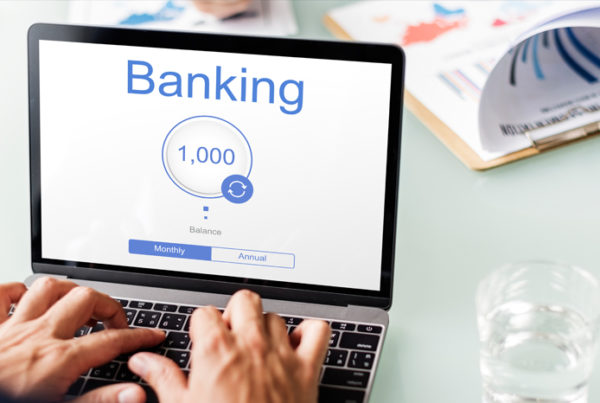Mobile money is a technological revolution which many emerging countries are proud of. Why? Because for once there is an area of mobility where they have lead by example and compelled the developed world to look up to them and learn for them. In many countries in Africa, Asia and Latin America mobile money is transforming the way people pay, save, borrow and transfer money. A person transferring money, recharging his mobile at any time of day or night, and paying bills instantly using mobile is a common site in countries such Kenya, Tanzania, Cote’d Ivoire and Zimbabwe. To put it in quantitative terms I am sharing some stats for GSMA – today there are 259 mobile money services globally, used by 299 million customers who are served by 2.3 million agents1.
While the success of mobile money is globally acclaimed there is another truth to it – Airtime top-up, P2P transfer and bill payments dominates mobile money transaction (statistically speaking they form 96% of all transaction2). So the question arises, will mobile money be limited to these three services? Where we will take mobile money next, or, may I say, where will mobile money take us next? The answer is ‘Merchant Payments’. Why? Because the opportunity is big – merchant payments are 10 times bigger than P2P payments (as per CGAP). To achieve the aim of truly cashless economies (the vision which mobile money services started with) we have to evolve form ‘once/twice a month’ P2P transfers or bill payments to ‘daily’ merchant payments. Currently many mobile money providers offer mobile money services, however the number of merchant payment transactions as a proportion of total mobile money transactions is very small. Only 1.3% of total mobile money transactions are merchant payments3. There are multiple reasons for slow-adoption of merchant payments which are discussed in following paragraphs.
The speed breakers
First and foremost is the acceptance network challenge. The most general complain is that, there are few merchant who accept mobile money. Growing the merchant network requires multiple bilateral agreements and integrations. Additionally, there are overheads related to clearance, settlement and dispute management.
Second is the user experience. Currently to perform a merchant payment a customer has to access the mobile money menu, enter his secret PIN, select the merchant payment option, enter the merchant ID and finally enter the payment amount to make a complete payment. All this is usually done through USSD (the most common interface to access mobile money due to ubiquity of feature phones in emerging markets). If you have ever used USSD, you will agree with me that the above process to make merchant payment is cumbersome. If I am in a hurry, I will use cash rather than following the above process!
Next is the business model. Currently customers have to pay a service charge to mobile money service providers for using mobile based merchant payment. Most customers would not be happy to pay a service charge on their daily purchase (this is over and above all the VAT’s and other taxes we pay). We can follow a business model where merchants pay the service charge (as in credit card). Here again merchant will raise the question – Why should I take a cut on my margins. There is a need to give tangible benefits that will make service charges for merchant payments justifiable.
Lastly, mobile money for merchant today is one sided. Current mobile money services only solve the demand side challenges and not the supply side. What I mean is that merchants are able to take payments from their customers via mobile money, but are not able to make payments to their suppliers using mobile money. They have to cash-out the money and then pay to suppliers. This defeats the purpose of creating cash-less economy and merchant looses interest in mobile payments.
The way ahead
As we say ‘if there is a will, there is a way’, similarly, ‘if there is a challenge, there is an innovation’. Mobile money service providers and platform vendors are developing solutions which address the challenges that are limiting the growth of mobile merchant payments. Let us look at some prominent ones:
Open the close: MasterCard/Visa do not directly communicate with consumers like us, but today they are part of most of the card transactions we do. Thanks to their open approach, today we can swipe a credit/debit card from Bank A on POS machine provided by Bank B. MasterCard and Visa are payment processors that acts as the mediator between various Bank A and B. Mobile money services have learned from this approach and are partnering with MasterCard/Visa to make the current closed loop service into open-loop. Mobile money service providers are working with MasterCard/Visa to provide companion cards (debit card) linked to mobile money accounts. These cards can be used to make payments at any of the MasterCard/Visa licensed POS machines both nationally and internationally. The companion cards can also be used at ATMs to withdraw cash. What’s the advantage of such open-loop payments systems? Mobile money providers in one go acquire all MasterCard/Visa licensed merchants both nationally and internationally. The merchant acceptance base for mobile money service providers increases from thousands to millions in very short span of time. MasterCard /Visa handles payments processing, clearance and settlement leaving mobile money service providers to focus on the service marketing. Open-loop merchant payment is a solution that is being embraced by a number of mobile money service providers (such as EcoCash Zimbabwe and Orange Money Botswana) to overcome the acceptance network challenge.
Bringing NFC into the play: As soon as I mentioned the word NFC, you would have thought about the well-known mobile payment services like Apple Pay, Samsung Pay, Android Pay and AliPay. The second though which comes is that NFC is a developed marketing concept and it is not relevant to emerging countries of Africa or South Asia. But operator like Airtel Tanzania is changing this misconception. Airtel Tanzania has introduced NFC merchant payment solution for Airtel Money customers to improve the merchant payment user experience. This innovative NFC payment service simplifies mobile merchant payments and addresses customer and merchant related adoption challenges. Airtel has equipped merchants with a portable NFC POS (which is one-third the cost of NFC POS currently available in the market). The NFC POS is a mini-calculator sized GSM (wireless) device linked to merchant’s mobile money account. To customers Airtel provides NFC card. NFC cards are linked to customer’s mobile money accounts and can work with all phones whether it’s a feature phone or a smartphone. To initiate a payment merchant enters the payment amount. Customer taps the NFC card over the POS and voila! the transaction is done. In case of a small value transaction (micropayment), customer does not need to enter the PIN. Removing the PIN entry step for micro-payments makes the process faster and simpler. Large value payments are PIN protected. At end customer receive transaction completion message. NFC solutions customized for emerging market will make adoption of merchant payments more feasible.
Making merchant payments lucrative: Merchants and customers will adopt merchant payment only if they see mobile money providing some compelling value-add over cash payment. Where will the value-add come from? Telcos are sitting on a gold mine – mobile money customer and transaction data. They need to dig this data to provide value to customers. For example, telcos should enable merchants to generate reports/dashboards of hourly, daily, weekly, monthly transactions happening via mobile money. This will help them in account keeping and analyze sales trend. Based on transaction data, merchants should be able to profile customers and send them promotions. Sample this, ‘Get 10% cash back when you shop for more than $50 and pay by mobile money’. Such promotions are win-win for customers and merchants, as customers get the cash-back and merchant gets more customers. In such cases customers or merchants would be happy to pay service charge as they are getting some value.
Extending mobile money to B2B payments: Mobile money providers need to add businesses to the mobile money ecosystem. Think of a system where a general merchant is directly able to pay suppliers such as Coco Cola, P&G, Uniliver directly from mobile money. For such transactions the threshold limits will be much higher compared to the P2P transactions. Adding businesses to the ecosystem completes the chain, will make mobile money case more stronger for merchants and will help our economies move closer towards achieving the aim of truly cashless economies.
These above points are just a glimpse of steps which various mobile money providers are taking to accelerate the adoption of mobile money based merchant payments. I believe many more such steps are on cards, which will entrench the use of mobile money payments in daily life of consumers.
1 GSMA Intelligence https://gsmaintelligence.com/topics/3363/dashboard/
2 GSMA 2014 State of Industry Mobile Financial Services for the Unbanked
3 GSMA 2014 State of Industry Mobile Financial Services for the Unbanked






